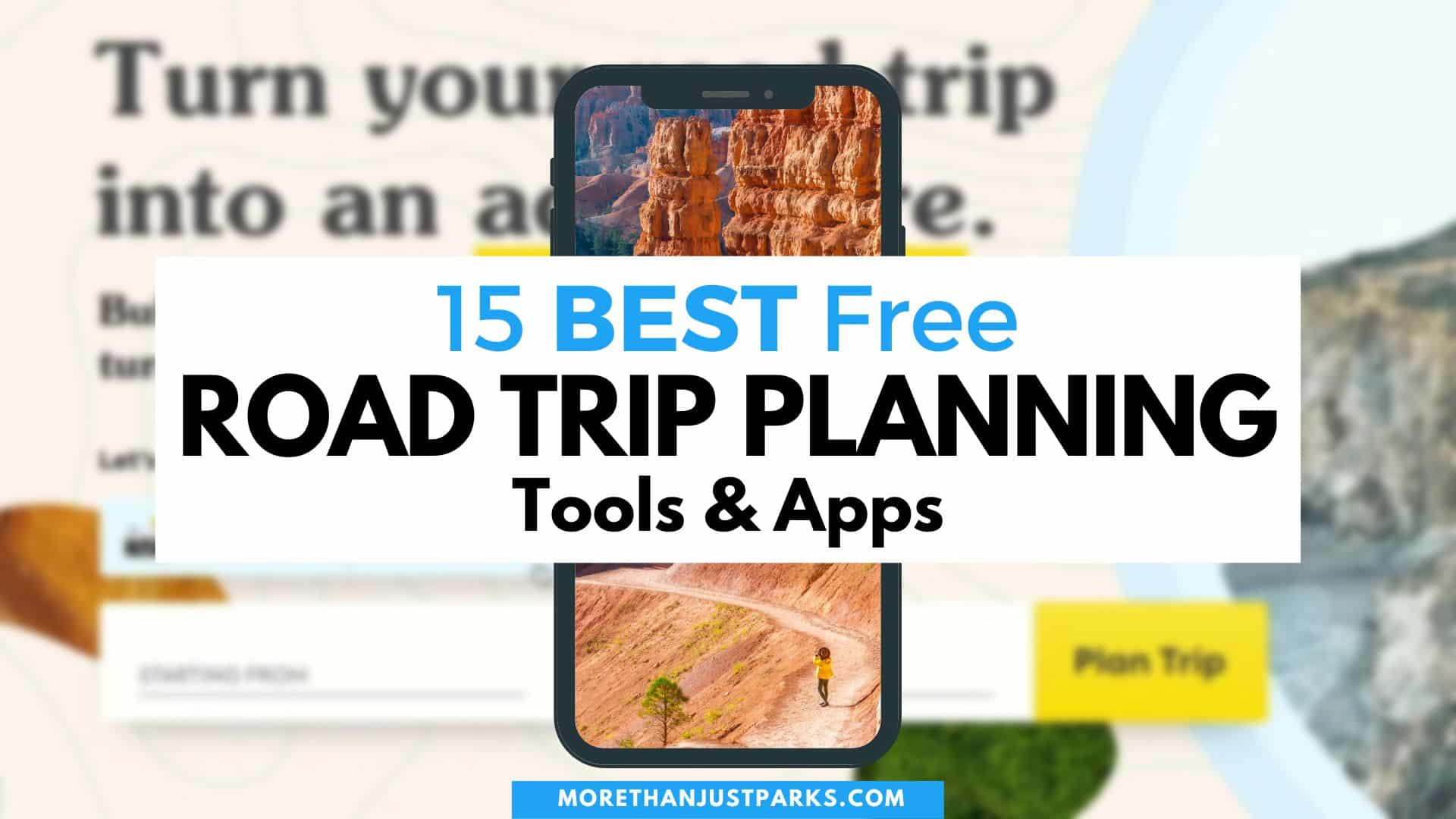The Best Tools for Planning a Travel Itinerary

Anúncios
Planning a travel itinerary is crucial for ensuring a seamless and enjoyable journey.
A well-structured plan significantly enhances the travel experience and enables optimal utilization of time and resources.
This guide outlines the essential components for creating an effective itinerary, including the identification of key destinations and the selection of appropriate planning tools.
Regardless of whether one prefers traditional methods or modern online tools, this guide will provide insights on collaborative planning and strategies to maximize the travel experience.
Anúncios
Prepare to turn your travel aspirations into reality.
The Importance of Planning a Travel Itinerary
Developing a travel itinerary is essential for facilitating a smooth and enjoyable travel experience, as it assists in effectively managing trip logistics, organization, and budgeting.
A well-structured itinerary serves as a roadmap, guiding travelers through their destinations while incorporating personalized experiences, accommodation details, and essential travel tips.
Furthermore, utilizing various travel resources, such as itinerary software and travel planning websites, improves the efficiency of the planning process, ensuring that all necessary aspects of the trip, including sightseeing and local attractions, are addressed.
By prioritizing the design of their itineraries, travelers can optimize their schedules and enhance their experiences across multiple destinations.
Benefits of Having a Solid Plan
A well-structured travel plan significantly enhances the overall travel experience by providing clear direction and reducing uncertainty, which in turn leads to improved timing and budget management.
This level of preparation not only enables travelers to manage their finances effectively but also ensures they can fully engage with their destination’s offerings without the constant concern of time constraints or overlooked expenses.
By taking into account factors such as seasonal events and peak travel periods, individuals can make more informed decisions regarding their travel timing, potentially resulting in cost savings and a more enjoyable experience by avoiding crowds.
A meticulously crafted travel itinerary also promotes spontaneity within a structured framework, allowing for unplanned yet memorable moments that often become the highlights of a journey.
Therefore, a thoughtfully developed travel plan is essential for achieving a streamlined and enriching travel experience.
Essential Components of a Travel Itinerary
A well-structured travel itinerary consists of several essential components that collectively contribute to the overall success of the journey.
Key elements include a clearly defined itinerary structure that outlines travel dates, destinations, activities, personal preferences, and necessary travel documentation.
Furthermore, incorporating a comprehensive travel checklist ensures coverage of important aspects such as packing lists, transportation options, and accommodation arrangements.
This process can be further enhanced by utilizing travel resources such as maps and itinerary templates.
By meticulously planning these components, travelers can develop a personalized itinerary that maximizes enjoyment and minimizes stress throughout their travel experiences.
What to Include in Your Itinerary
When developing a travel itinerary, it is essential to incorporate key elements that align with one’s travel preferences, budgetary limitations, and schedule, thereby ensuring a memorable experience. Initiate the process by referencing travel itinerary examples that resonate with your interests, such as sightseeing planners for local attractions and distinctive travel experiences.
Allocate time for leisure activities, cultural explorations, and the enjoyment of local cuisine while remaining mindful of your travel budget to prevent overspending. By structuring the itinerary effectively, one can achieve a harmonious balance between adventure and relaxation throughout the trip.
In constructing a comprehensive plan, it is important to consider one’s travel style; whether one thrives on spontaneous adventures or favors meticulously organized schedules, personalization is critical. Explore specific activities such as hiking trails, city tours, or museum visits that align with your passions.
Additionally, it is prudent to include rest periods to rejuvenate, particularly when visiting multiple destinations.
Furthermore, it is advisable to research seasonal events or local festivals that may enhance the overall travel experience, ensuring that every moment is filled with opportunities that resonate with your sense of adventure and curiosity.
Choosing the Right Tools for Planning
Selecting the appropriate tools for travel planning is essential for developing a well-structured itinerary that aligns with individual requirements and enhances the overall travel management process.
Numerous travelers find it advantageous to utilize a range of travel resources, including itinerary builders, travel applications, and online itinerary platforms, which facilitate a more efficient planning experience.
These tools not only aid in organizing travel logistics but also offer valuable insights and recommendations regarding accommodations, transportation options, and local attractions.
By carefully selecting the right planning tools, travelers can ensure a seamless experience tailored to their preferences.
Factors to Consider
When selecting travel planning tools, it is essential to consider several factors to optimize your travel itinerary effectively. It is advisable to prioritize tools that facilitate easy design of travel itineraries, allowing for customization based on individual preferences and interests.
Additionally, the importance of travel timing cannot be overstated, along with the ability to access real-time travel reviews and feedback from fellow travelers, as these elements can significantly influence travel decisions. By carefully weighing these factors, one can identify the most suitable tools to enhance trip planning and overall travel experience.
Another critical aspect to consider is the user interface of the planning tools; a straightforward and intuitive design can save time and minimize frustration during the planning phase.
Furthermore, integration with local services such as accommodation, transportation, and dining options can streamline the process and provide a more comprehensive view of potential travel experiences. The availability of mobile access is also paramount, as it enables travelers to easily update and manage their itineraries while on the go.
These elements collectively contribute to the creation of a robust platform that not only meets travel needs but also significantly enhances traveler satisfaction and enjoyment throughout their journey.
Traditional Methods for Planning
Despite the growing prevalence of digital travel tools, a significant number of travelers continue to favor traditional methods for trip planning, employing pen and paper or spreadsheets to organize their itineraries. These methods provide a tactile experience that many individuals find advantageous for travel organization, enabling them to create checklists, record travel tips, or outline their travel routes with ease.
Furthermore, traditional planning approaches offer a high degree of customization, allowing travelers to integrate their unique preferences and styles into their itineraries. By exploring these methods, travelers can identify a planning style that aligns with their needs while ensuring that no detail is overlooked.
Using Pen and Paper or Spreadsheets
Utilizing pen and paper or spreadsheets for travel planning presents a distinctive method for creating a visual representation of one’s travel timeline and activities. This approach enables travelers to customize their itineraries effectively by incorporating essential details, such as travel activities, transportation options, and accommodation bookings, while also allowing for real-time adjustments as necessary.
The act of taking physical notes can enhance the connection to the planning process, resulting in a more personalized travel experience. By employing these traditional methods, travelers can develop itineraries that are both structured and adaptable.
These tools facilitate the prioritization of destinations and activities based on individual preferences, thereby promoting a more organized approach to travel. The tactile experience of writing can also improve memory retention, which proves advantageous for recalling important dates or reservations.
Additionally, spreadsheets provide the capability for easy sorting and filtering of information, simplifying the tracking of expenses and other essential travel details. Ultimately, whether utilizing paper or digital formats, these techniques give the power to travelers to design itineraries that thoughtfully reflect their unique journeys.
Online Tools for Planning
Online tools for travel planning have significantly transformed the manner in which travelers develop their itineraries, offering user-friendly interfaces and comprehensive features that enhance the overall planning experience.
With a wide array of travel applications and itinerary software available, individuals can efficiently manage travel logistics, accommodation bookings, and route planning, all within a single platform.
Furthermore, these online resources facilitate the discovery of local attractions, offer travel tips, and assist in optimizing travel budgets, contributing to a more enjoyable experience.
By incorporating these digital tools into the travel planning process, one can attain greater efficiency and satisfaction in organizing their trips.
Websites and Apps for Creating Itineraries
Websites and applications designed for itinerary creation provide a wide array of features that enhance travel organization and streamline the planning process. Many travel itinerary applications enable users to construct customizable itineraries, incorporating essential elements such as travel schedules, budget calculators, and travel checklists into their plans.
These online tools often offer user-generated travel feedback, reviews, and recommendations for local attractions and activities, thereby give the power toing travelers to make informed decisions. By utilizing these resources, individuals can develop an effective travel itinerary that aligns with their interests and preferences.
These digital platforms frequently include integrated maps to facilitate route visualization and assist in discovering nearby points of interest, thereby simplifying navigation in unfamiliar locations.
Additionally, some applications provide real-time updates regarding flight statuses and accommodation bookings, ensuring that all aspects of the trip remain on schedule.
For those who value collaboration, several options allow multiple users to contribute to a shared itinerary, making them an excellent choice for group travel.
In conclusion, the use of these itinerary creation tools not only saves time and alleviates stress but also enhances the travel experience by maintaining organization in a centralized location.
Collaborative Planning with Others
Collaborative planning presents a valuable opportunity for travelers to exchange ideas, preferences, and insights, leading to a more inclusive and customized travel itinerary.
Engaging in group travel planning encourages discussions among travel companions, allowing each individual to contribute to the itinerary and articulate their travel interests, thereby enhancing the overall travel experience.
Furthermore, the use of itinerary-sharing tools ensures that all group members stay informed and actively involved throughout the travel planning process.
By adopting collaborative planning, travelers can cultivate stronger connections and create lasting memories together.
Ways to Plan with Travel Companions
When planning a trip with travel companions, it is crucial to take into account the preferences and interests of all participants in order to develop a cohesive travel itinerary. Engaging in discussions regarding travel experiences and individual preferences can help ensure that every group member feels included and valued in the planning process.
Utilizing tools designed for shared itineraries can facilitate collaboration, allowing each traveler to contribute ideas for activities, accommodations, and sightseeing, thereby enhancing the overall travel experience. By being attentive to one another’s preferences, a positive group dynamic can be cultivated, maximizing the enjoyment of the trip.
This collaborative approach not only instills a sense of ownership among all participants but also promotes open communication, thereby minimizing the likelihood of conflicts during the journey. It may be beneficial to consider using applications or shared documents that allow for real-time updates and comments, making it straightforward for travel companions to adjust plans as necessary.
Maintaining a flexible itinerary that accommodates spontaneous adventures can significantly enrich the travel experience, enabling the group to explore destinations at their discretion. By prioritizing collaboration, the journey evolves into a collective adventure, characterized by shared responsibilities and memorable discoveries that all travelers will treasure.
Tips for Creating an Effective Itinerary
Developing an effective travel itinerary requires careful consideration of several factors that contribute to a seamless and enjoyable journey.
It is essential to prioritize travel optimization by allocating sufficient time for activities, local attractions, and leisure pursuits. Utilizing a travel checklist can enhance organization, ensuring that essential items are packed and travel documents are managed efficiently.
Furthermore, being mindful of travel timing can significantly improve the overall experience, allowing for smooth navigation through destinations and the avoidance of overcrowded tourist areas.
Maximizing Your Planning Process
To optimize the travel planning process, it is imperative to utilize a variety of resources and tools specifically designed for travel organization and itinerary management. Begin by employing travel resources such as destination research tools, travel blogs, and forums to gather insights and tips that align with your travel budget and preferences.
Additionally, consider incorporating budget calculators and scheduling tools into your planning routine, as these can help streamline the process and ensure a more efficient travel experience. By enhancing your planning efforts, you can develop a well-organized itinerary that significantly improves your overall journey.
This method not only reduces stress but also mitigates the risk of overspending, enabling travelers to allocate funds toward unique experiences. Utilizing mobile applications focused on itinerary creation can further assist in consolidating all travel details into one accessible location, making it easier to adjust plans as necessary.
Engaging with local communities online can also uncover hidden gems, thereby enriching the travel experience without incurring excessive costs. By making informed choices through these strategies, travelers can elevate their travel planning, leading to a more rewarding adventure.
Frequently Asked Questions
What are the best tools for planning a travel itinerary?
Some of the top tools for planning a travel itinerary include online travel planning websites like TripIt and Travefy, travel itinerary apps like TripCase and Sygic Travel, and traditional paper planners like Moleskine and Filofax.
How do online travel planning websites help with itinerary planning?
Online travel planning websites like TripIt and Travefy allow you to input all your travel details, such as flight and hotel reservations, into one central place. These sites then automatically generate a detailed itinerary for you, which you can access on-the-go through their mobile apps.
What features should I look for in a travel itinerary app?
When choosing a travel itinerary app, look for features like offline access, the ability to add custom activities, and integration with other travel tools like flight trackers and weather forecasts. This will help you stay organized and prepared throughout your trip.
Are paper planners still useful for planning a travel itinerary?
While digital tools have become increasingly popular, paper planners can still be a great option for some travelers. With a paper planner, you have the flexibility to customize your itinerary and add personal notes or details. Plus, you don’t have to worry about battery life or Wi-Fi access.
Can I use multiple tools for planning a travel itinerary?
Absolutely! In fact, many travelers find it helpful to use a combination of tools for itinerary planning. For example, you could use an online travel planning website to create the initial itinerary and then use a paper planner to fine-tune the details and keep track of important information.
Do any of these tools offer additional features for budget planning?
Yes, some travel planning tools like TripIt and Sygic Travel offer budget tracking features. They allow you to input your estimated expenses and track your actual spending throughout your trip. This can help you stay within your budget and make adjustments as needed.


